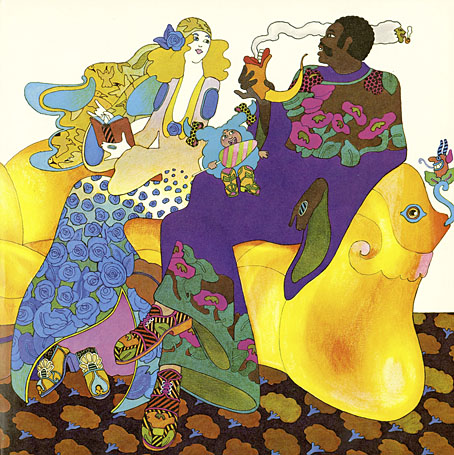
The Teletrips of Alala (1970).
The imaginative landscapes of childhood were always close at hand in the psychedelic culture of the 1960s, more so in Britain than the USA, and especially where music was concerned. Grace Slick may have given the world White Rabbit but there’s a whole sub-genre of British psychedelic song-writing devoted to children’s games, children’s dreams, sweetshops, fairy tales and the like. Rob Chapman in his essential study of the form, Psychedelia and Other Colours, refers to this tendency as “infantasia”. With psychedelic art being so vivid and playful it’s a small step from lysergic wonderlands to children’s books styled in a quasi-psychedelic manner, which is what we have here. There was a lot of this around in the early 1970s, not all of it very memorable. Some of the best examples were published by Harlin Quist, a US/French imprint who specialised in beautiful books illustrated by exceptional talents. A few of these may be seen at The Peculiar Manicule.
Gertrude and the Mermaid (1968)
by Richard Hughes, illustrated by Nicole Claveloux.
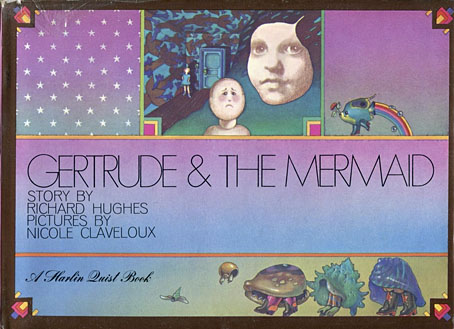
“This is the story a little girl, her doll named Gertrude, and a mysterious mermaid-child.” The first of several books by Nicole Claveloux for Harlin Quist.
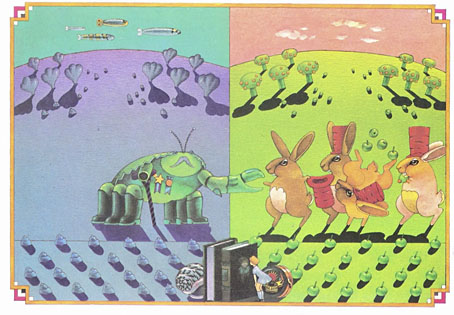
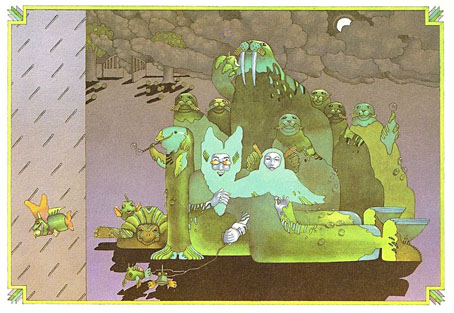
Help, Help, the Globolinks! (1970)
by Gian Carlo Menotti, translated and adapted by Leigh Dean, illustrated by Milton Glaser.
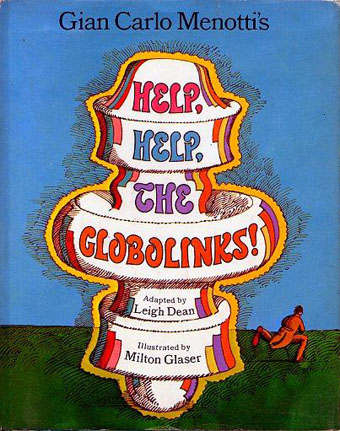
“Recounts the events following the landing of the outer-space Globolinks on Earth.” A German comic opera from 1968 in which a group of children encounter an alien invasion.
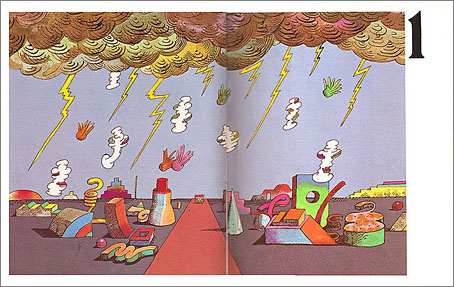
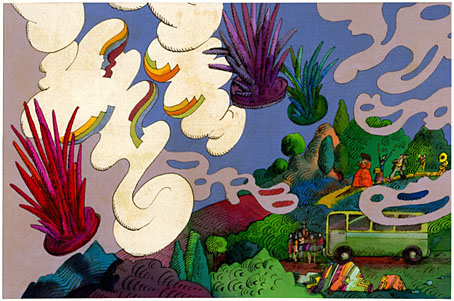
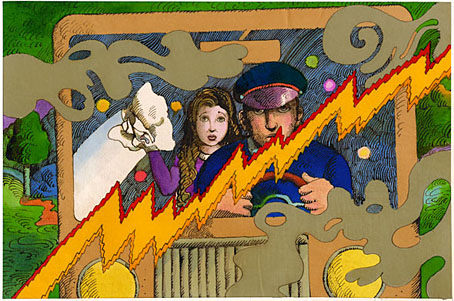
The Teletrips of Alala (1970)
by Guy Monreal, illustrated by Nicole Claveloux.
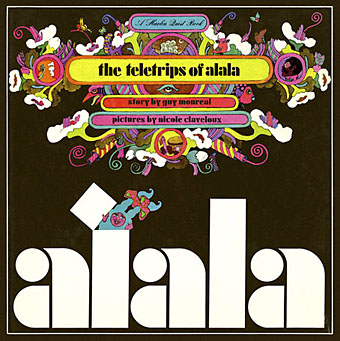
“With her unique power to enter the television set and change the course of the programs, Alala creates havoc in the world.” Nicole Claveloux puts her own twist on the Yellow Submarine art style. A few years after this she was creating comic strips for Métal Hurlant. Her more recent work includes erotic retellings of fairy tales. (more pages)
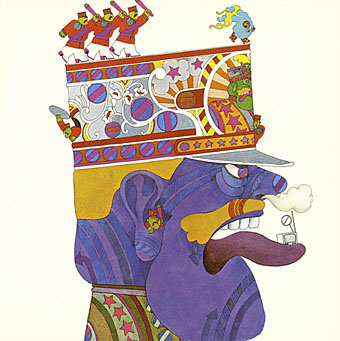
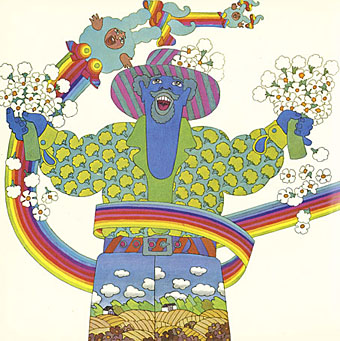
Andromedar SR1 (1971)
by Martin Ripkens & Hans Stempel, illustrated by Heinz Edelmann.
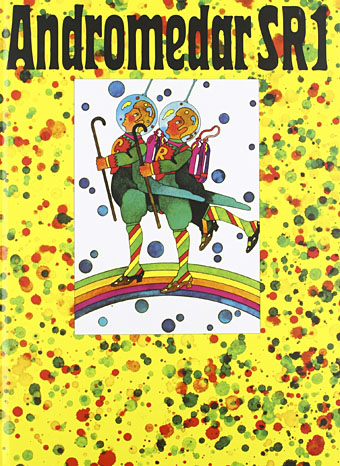
“Two astronauts under the spell of an evil octopus are ordered to steal the cobalt-blue flowers from the Martian Mice.” Ripkens and Stempel were better known for their work as cinema critics and film-makers. (more pages)

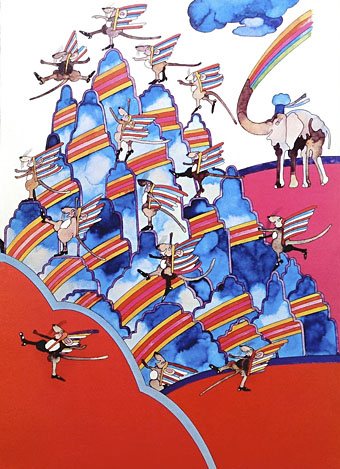
Cartulino: El asombroso doctor Zas (1971)
by Miguel Agustí, illustrated by Alberto Solsona.
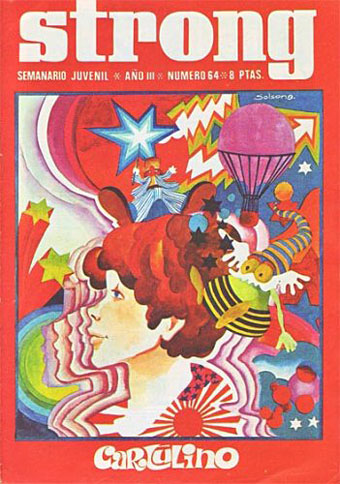
A comic strip from a Spanish title, Strong. Alberto Solsona also drew Agar-Agar, the grooviest strip in the short-lived Dracula comic. Cartulino had a number of different adventures but online examples are scarce.
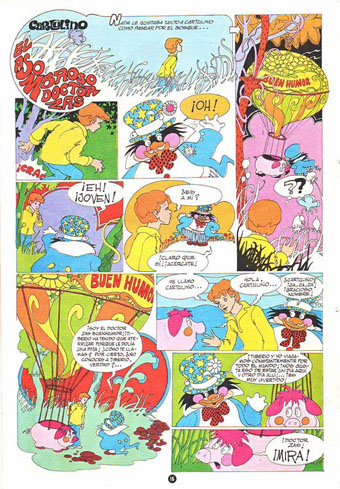
Los Doce Trabajos de Hércules (1973)
by Miguel Calatayud.
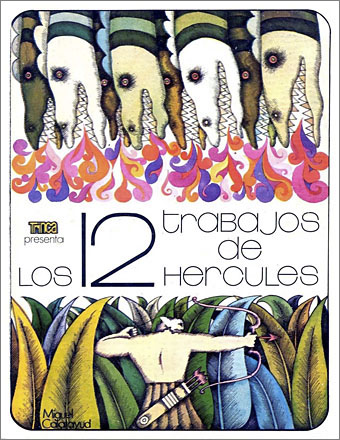
“Serie de episodios sobre la penitencia llevada a cabo por Hércules el mayor de los héroes griegos.” A comic adaptation rather than a story book but the art style is a good example of the general trend.
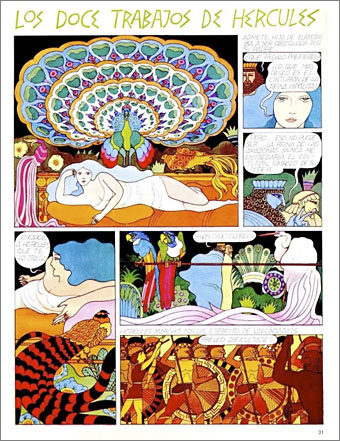
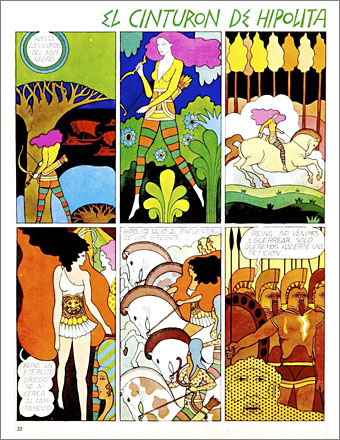
Update: Added Alberto Solsona.
Previously on { feuilleton }
• Glaser goes POP
• Return to Pepperland
• The groovy look
• The psychedelic art of Nicole Claveloux
• Psychedelia and Other Colours by Rob Chapman
• David Chestnutt’s psychedelic fairy tales

Miguel Calatayud made a lot more of comics and illustrated books apart from his version of “Los doce trabajos de Hércules”. This and the adventures of his fantastic hero “Peter Petrake” were published in the Spanish comics magazine for young adults “Trinca”, where there was too another Spanish artists with some Pop Art and Psychedelic style, but Calatayud was then and it´s now the most famous. Another Spanish artist, Alberto Solsona, sadly passed away before his time, made a lot of Pop and Psychedelic comics and illustrations, both for adults and children, especially the fantastic and lightly erotic heroine Agar-Agar for the comics magazine “Dracula”, in this magazine you can find too other great Spanish innovative artists like Esteban Maroto or Enric Sió, both very Pop Art but less Psychedelic. Another Spanish artists with some work in the same line are the movie director, animator and comic artist Francisco Macián and the illustrator José Ramón Sánchez, both made books, tv shows, commercials and movies for kids with Psychedelic style and sensibilities.
Very enjoyable look back at these. Art like this always reminds me of the “7up” “uncola” soft drink advertising campaign of the early 70’s, here in the States, which I saw unfold as a youngster. I’m always interested, to this day, in how the look and attitudes of “the sixties” extended into the early 1970’s. This look seemed to fade away by 1973, though one of your examples hails from that year.
Jesús: Thanks, I’m very familiar with Alberto Solsona, I have the Dracula annual (I love the Agar-Agar strips!) and also wrote about Solsona himself here: http://www.johncoulthart.com/feuilleton/2015/04/11/more-alberto-solsona/ El asombroso doctor Zas probably belongs in this post.
Jim: I think Coca-Cola and Pepsi also had similar campaigns for a while, aside from the famous Coke TV ad. Over here we had a very ordinary brand of beer trying to seem groovier than it was in 1968: https://www.modernillustration.org/archive/doublediamond1968uncredited
That Peculiar Manacule led me to Never Make Fun of a Turtle, My Son by John Alcorn + Martin Gardner — very influential on me due to my dad giving me Gardner’s mathematical games books and his annotated Alice in Wonderland, and the Alcorn-illustrated Fireside Book of Children’s Songs which my dad played for me on the piano). If only I’d known of it when I was a kid!
https://www.peculiarmanicule.com/never-make-fun-of-a-turtle-my-son
Just to clarify, Martin Gardner and John Alcorn were both presences in my childhood, but I didn’t know of this collaboration!
I almost included the Alcorn book but I was after story books rather than single illustrations. A shame he didn’t do something for Harlin Quist, he was certainly adept enough.
Why can’t evil octopi ever leave the Martian Mice alone?
It occurs to me that Andromedar SR1 may be where the German duo Mouse On Mars got their name.